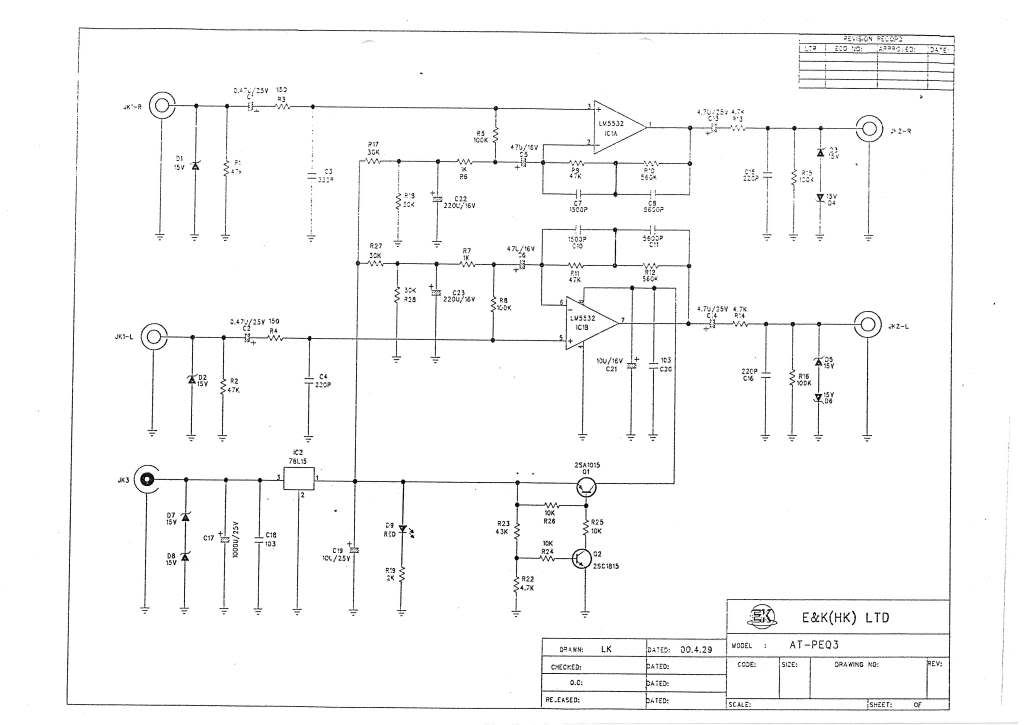lofiharvest
Member
Cool!
Here is the phono section of a Mcintosh C34V.
Wondering what the thought behind posting this is?
(Really am wondering, quite new to 'this')
I'm not the poster but I took it as a comparison. An inexpensive, 2 dual opamp circuit using passive equalization (that is passive filters nestled between flat gain stages) as opposed to a 1 opamp stage using active (read feedback loop) equalization used in a very expensive name brand device.
Just my take on it.
Incidentally, in case my opinion is not really clear, I like the idea of the passive eq. circuit better then the feedback eq.
Shelly_D

I finally made the PCB of the super cheap phono stage. I did an oops with it as I had quickly scribbled the component values onto a piece of paper and had a 2.7k resistor instead of a 27k. When I first tried it I couldn't work out why there was no bass.
Once that was fixed all was well, it needs burning in and I added some components, a dc blocking resistor in the inputs and a blocking cap and loading resistor to the outputs. As well as bypass caps on the op amp supply lines.
It sounds remarkably good, I will do some critical listening once it's burned in, but for less than $30.00 it's a bargain.
Here's the PCB design:
It can run up to +18V/-18VDC. You just need a pair of power supplies to provide for both the positive and negative rails. 1 pair of 9V batteries are cheap and easy. 2 pair could be run for 18v. As long as you have the dual supply, it will work.
The Hagerman PS would be ideal.
I'm not the poster but I took it as a comparison. An inexpensive, 2 dual opamp circuit using passive equalization (that is passive filters nestled between flat gain stages) as opposed to a 1 opamp stage using active (read feedback loop) equalization used in a very expensive name brand device.
Just my take on it.
Incidentally, in case my opinion is not really clear, I like the idea of the passive eq. circuit better then the feedback eq.
Shelly_D
I would gladly go for at least two boards, maybe more. Count me in.
PS- what happened to the 33nf cap that parallels the 47nf on your built board?
I also see you went with one cap for 27nf instead of three in parallel to hit 27.2.
If someone did a run of those PCB's I would buy one to give it a shot.
